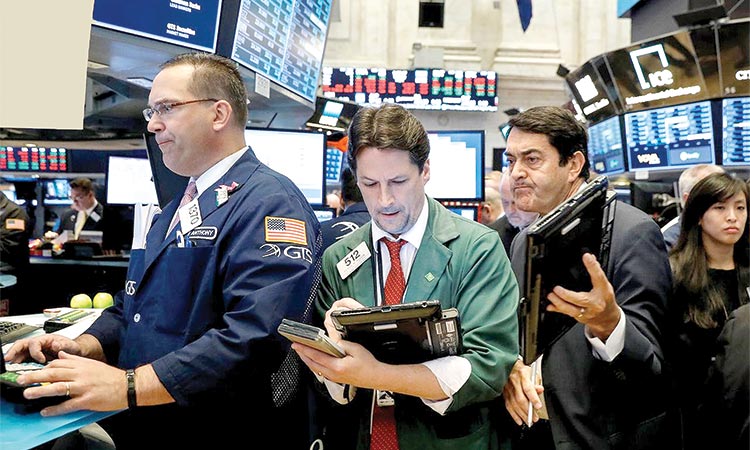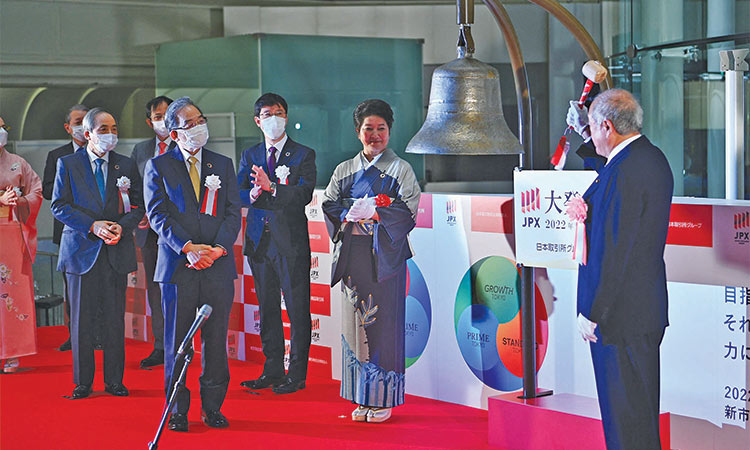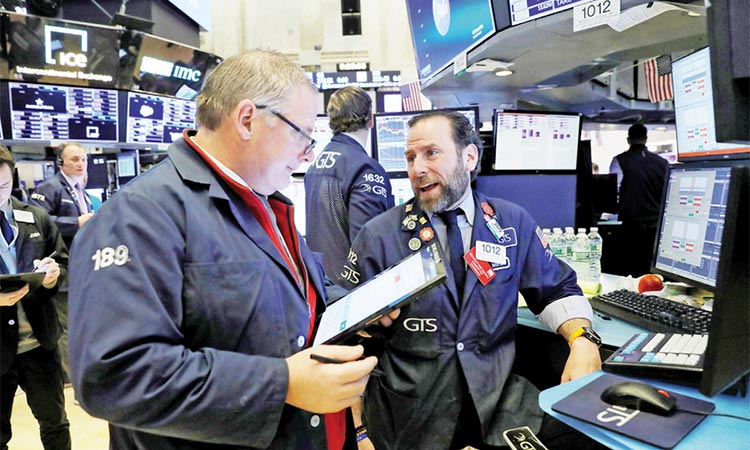Stocks and sovereign bonds take breather after rate-repricing rally

Picture used for illustrative purpose only.
Battered bond markets have recovered as a benign US payrolls report and upbeat productivity numbers suggested the labour market was cooling enough to obviate the need for further rate increases from the Federal Reserve.
Futures markets swung to imply a 90% chance the Fed was done raising rates, and an 86% chance the first policy easing would come as soon as June.
Markets also imply about an 80% probability the European Central Bank (ECB) will cut rates by April, while the Bank of England (BoE) is seen easing in August.
Benchmark US 10-year yields fell around 29 basis points (bps) last week, the biggest weekly drop since March. Bond yields move inversely to their prices.
The rally paused on Monday, and the 10-year yield was last up around 4 bps at 4.599%, well down from mid-October’s high over 5%.
“We would want to add a note of caution - yes, we are in the camp that says the inflation outlook will allow rate cuts next year, but going to more-and-sooner cuts feels like the pendulum has gone a bit too far,” said Samy Chaar, chief economist at Lombard Odier.
“We’ve seen this back and forth before, and I think it’s going to be the story for the coming quarters.”
Central bankers have their own chance to weigh in on this dovish outlook, with at least nine Fed members speaking this week, including Chair Jerome Powell. Also on the docket are speakers from the BoE and ECB.
An outlier is Australia’s central bank, which is considered likely to resume raising rates at a policy meeting on Tuesday as inflation there stays stubbornly high.
The Bank of Japan is also on the road to tightening, albeit at a glacial pace. The head of the central bank said on Monday it was closer to achieving its inflation target, but it was still not enough to end ultra-loose policy.
Hopes for lower borrowing costs continue to help shares, particularly those in Asia that missed out on the rally on Friday inspired by that day’s US jobs data.
MSCI’s broadest index of Asia-Pacific shares outside Japan gained 2.1% on Monday, pushing MSCI’s world index up 0.36%,, its sixth session of gains.
The world index had its biggest weekly gain in a year last week. European shares opened in positive territory on Monday and were last down slightly on the day after having their best week since March.
South Korea stood out, climbing 5.66% as authorities re-imposed a ban on short-selling to mid-2024.
S&P 500 futures and Nasdaq futures were both up around 0.2%.
Two-year Treasury yields paused at 4.876%, up 4 bps, after falling 18 bps last week, while the euro zone benchmark 10-year Bund yield was up 6 bps at 2.7%, after seven sessions of falls .
The recent retreat in Treasury yields has pulled the rug out from under the dollar, and the dollar index was last down 0.13% at 104.93, its lowest since late September, having slid 1.4% last week.
The euro was up 0.17% at $1.0747, its highest in nearly two months having surged 1% on Friday. The dollar has even lost ground in recent sessions to the ailing yen to stand at 149.68 yen, some way from its recent top of 151.74, if a touch higher on the day.
The drop in the dollar and yields helped underpin gold at $1,985, down 0.4% on the day, but within striking distance of the recent five-month peak of $2,009.
Oil prices rose, after shedding 6% last week, drawing support from confirmation Saudi Arabia and Russia would continue their additional voluntary oil output cuts.
Brent added 1.25% to $85.90 a barrel, while US crude climbed a similar amount to $81.62 per barrel.
Copper prices climbed on Monday to one-month highs as a softer dollar and China’s commitment to boost imports spurred fund buying ahead of key Chinese economic data.
Benchmark copper on the London Metal Exchange (LME) traded 0.5% higher at $8,217 a metric ton in official rings after touching its highest since Oct. 2 at $8,260.
Chinese Premier Li Qiang told a trade fair in Shanghai on Sunday that the country would open up its economy and that its imports of goods and services would reach a cumulative $17 trillion within the next five years.
“China comments over the weekend are supporting sentiment, as is the dollar after last week’s jobs data from the United States,” one metals trader said.
The dollar tumbled after a soft US monthly jobs report reinforced expectations that the Federal Reserve will keep interest rates steady at its December meeting.
A weaker US currency makes dollar-denominated commodities cheaper for holders of other currencies, which could boost demand for industrial metals.
Data on China’s exports, imports, consumer price inflation and total social financing will be closely watched over the next few days for clues to demand prospects for industrial metals.
However, a lack of concern about copper supplies can be seen in the discount for cash copper over the three-month contract at $80 a ton, its highest for more than 30 years.
Traders said a break of the 50-day moving average around $8,180 created upside momentum and that the next barrier was around $8,307, the 100-day moving average.
Elsewhere, aluminium touched a one-month high at $2,285 a ton, partly owing to low stocks in warehouses monitored by the Shanghai Futures Exchange and sliding inventories in LME-approved warehouses .
Agencies







